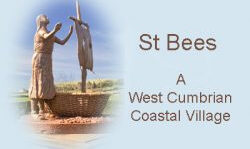Stanley Kenworthy
St Bees Dead of the First World War
Roll of Honour
Stanley Kenworthy
17th Bn Manchester regiment
Killed in Action on the Somme 1916, aged 32


From the ‘Whitehaven News’ July 1916:
ST. BEES OFFICER KILLED.
CAPT. S. KENWORTHY 17th MANCHESTER REGIMENT
“The death of Captain Stanley Kenworthy, the elder son of Mr. and Mrs. J. D. Kenworthy, of Sea Croft, St. Bees, who was killed in action on July 1st, the first day of the British advance in France, was telegraphed to Mr. Kenworthy on Friday. After the outbreak of war Captain Kenworthy was one of the first to offer his services, and having been accepted, he was shortly afterwards gazetted as second lieutenant in the 17th City Battalion, Manchester Regiment. He soon proved himself to be a very capable and smart officer, and was promoted to the rank of lieutenant, and then to that of captain. Since he had been in France he had seen a good deal of fighting, and his name appeared in Sir Douglas Haig’s list of those who had distinguished themselves in the field, which was published on June 16th last.
Educated at St. Bees School, Captain Kenworthy obtained Fox and Grindal Exhibitions to Queen’s College, where he graduated M.A., and when war broke out he was a master at Merchiston Lodge, Edinburgh. As an athlete he had always taken a prominent place both for school and county, having played football and cricket for Queen’s, and football for Cumberland and Cheshire. He was also an enthusiastic golfer, and well-known at Seascale, where a few years ago he won the cup for the final in the medal competition. He was popular not only in the field of sport, but as an officer, and his death is deeply regretted, not only by his comrades in the field but by his many friends and acquaintances in this district, where his manly cheerful presence was so familiar. The deepest public sympathy with Mr. and Mrs. Kenworthy is everywhere expressed, with sorrow, for they, with so many others, have suffered the bitterest loss that war can inflict on parents – that of the eldest born.”
(The article continues with the death in the same action of Captain R. J. Ford, late Science Master at St. Bees School, and an officer in its O. T. C. – Ed)
From St. Bees School Roll Of Honour, page 31
“Captain Stanley Kenworthy, 17th Manchester Regiment, was killed in action on July 1, 1916, at Montauban. He entered the School House in 1895, and was Head of the School when he left in 1903. He gained both ‘Fox’ and ‘Grindal’ Exhibitions to Queen’s College, Oxford, of which he was MA, and when the war broke out he was a Master at the Merchiston Castle School, Edinburgh. He was one of the first to offer his services, and was shortly afterwards gazetted as Second-Lieut. in the 17th City Battalion, Manchester Regiment. His capabilities as an officer were soon recognised, and his promotion to Lieutenant and Captain soon followed. He saw a good deal of fighting in France and was mentioned in Douglas Haig’s despatch of June 16th. A good sportsman and an all-round athlete, he played in the School XI and XV, for the Cumbedand XV 1903 – 05, for Queen’s College XI and XV, and for the Cheshire XV 1907 – 08.”
Through private accounts and the Regimental War Diary we can gain some idea of the way in way in which Stanley Kenworthy met his death.
By July 1st 1916, the first day of the Somme battle, he was a Company Commander in the 17th. Battalion of the Manchester Regiment. These were more usually known as the “2nd Manchester Pals”. They were to be the second wave of the assault, leaving their trenches at 0750 (H + 20) and passing through the first wave to attack the village of Montauban.
All began well, and although there was soon heavy shelling the “2nd Pals” were able to progress and overtake the first wave. They then came under heavy machine gun fire, mainly from the left flank. Casualties were quickly in the hundreds. The officers leading the assault suffered particularly badly, every single Company commander being either killed or seriously wounded. Captain Kenworthy was one of those killed. Nevertheless the remnants of the Pals went forward, silencing the machine guns one by one, and by 1030 they had driven the enemy out of Montauban and made it secure. It did not fall again until 1918.
The attack on Montauban was one of the very few successes on that disastrous day. This is all the more remarkable because for most of the Manchesters, and also for the Liverpool Pals involved, this was their first taste of action.
See Manchester Regiment for additional information – Ed
The ‘Pals’ memorial at Montauban. On the left, the plan of the battle of Montauban, on the right the “Pals” memorial
